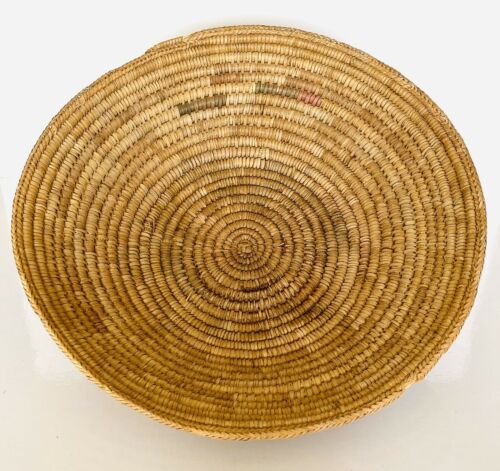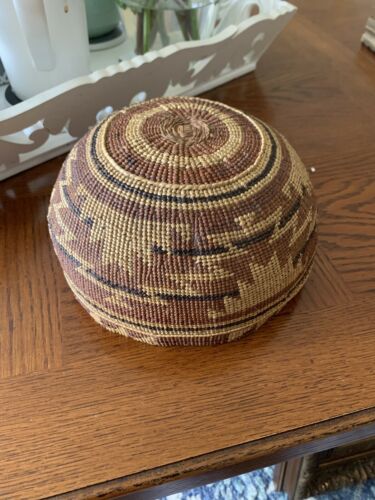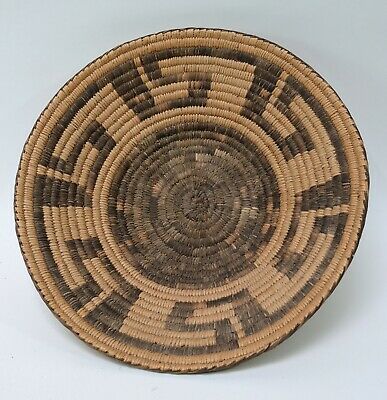-40%
Nice 81/4d.x5 1/2"ht Vintage 20th c Pima Indian Basket Bowl Tight Weave Beauty
$ 211.2
- Description
- Size Guide
Description
Up for sale is this very fine and tightly woven exquisite Pima basket. I counted 13 rows of coil on the bottom in radius and 38 coils from the bottom to the top. This is a master weaver. I have not tried it but I think that maybe it could hold water.The design is stepped up geometric. The condition of the work is remarkable. The inside is as good as the outer appearance. This came from a world traveler whom recently passed:he was a federal judge and Renaissance man. If he hadn't been in the legal profession he would have liked to have been a poet. His house was filled with interesting objects and to top it off it was a family run sale. The diameter of the top is 8 1/2". the diameter of the bottom is 4 1/4" and the height is 5 1/2".
west Indian Akimel O´odham (Pima) Baskets as Fine Art
The Akimel O´odham River People (Pima) of Arizona were major basket makers in the late 19th century, primarily
making them for their own use. At the turn of the century, basket weaving was being practiced in every home. This continued into the early 20th century, at which time Southwest Indian basketry became a collectible commodity. The problem was that the collectors and dealers only paid .00 to .00 for a basket. The women soon realized that it was not practical to spend weeks making a basket when they could pick cotton and earn .00 a day. By the 1920s, basket weaving all but disappeared. By 1960, they were not even making baskets for their own use. They had, by then, substituted commercially made pots and pans for utilitarian use.
The utilitarian shapes they had made for use included trays, bowls, jars, and a few miscellaneous forms. The trays were the graceful forms and could be shallow or deep. The bowls were deep and large in most cases, but occasionally might be smaller. Jars ranged from large storage vessels to small sizes for trinkets. Among miscellaneous forms that were not too abundantly made were cups, plaques, wastebaskets, footed pieces, and miniatures


















